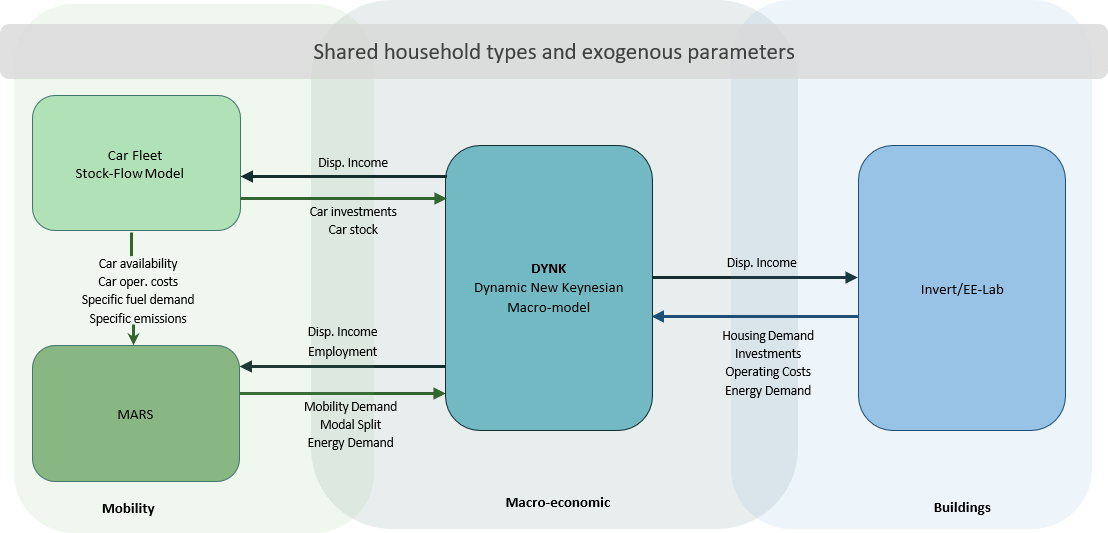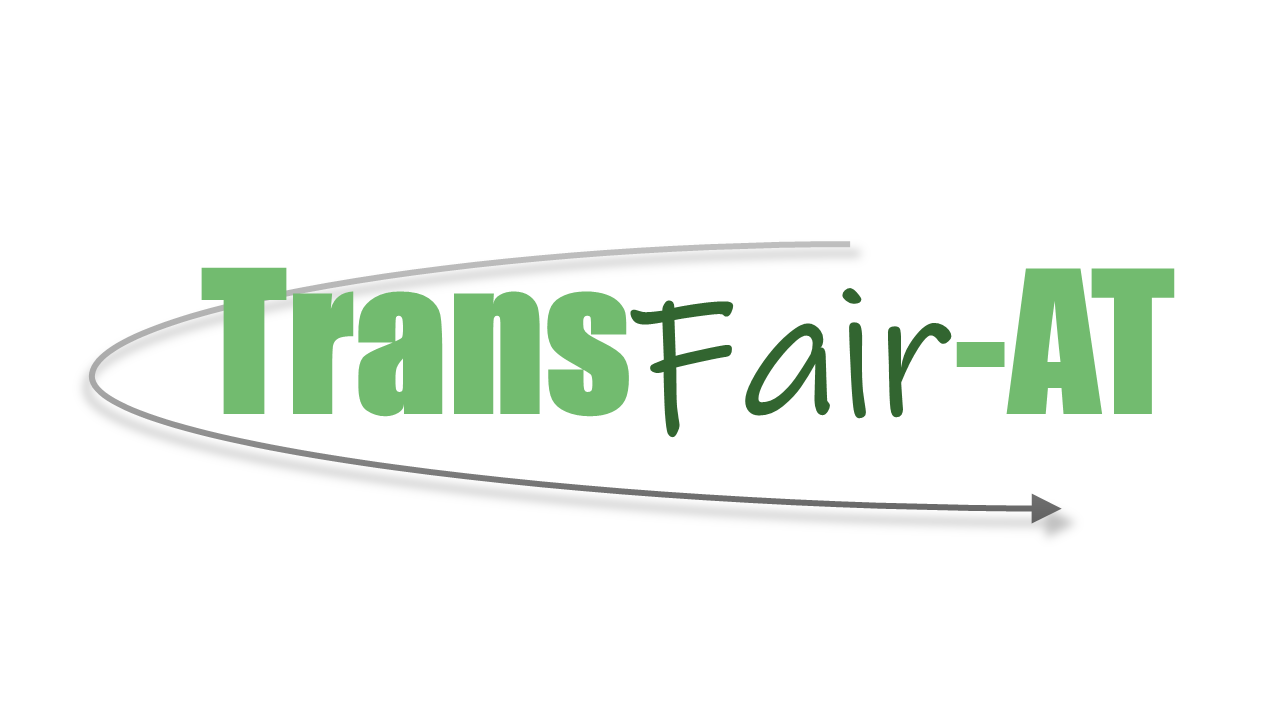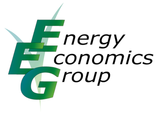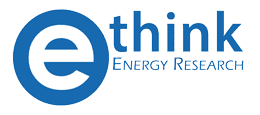Work Package 2: Model Preparation and Linking
Description
In WP2, the macroeconomic model DYNK was linked with three bottom-up models – the Invert/EE-Lab model for buildings, the MARS model for covering transport demand, and a model for vehicle choice – to assess the distribution effects of climate policy scenarios and compensation mechanisms. The combined linkage of models was tested and validated.
Work Package 2 consists of three tasks:
- Model preparation
- Model linkage
- Model testing and validation
Model preparation
Each of the three modelling groups revised their models and update them with the most recent data available. Modifications necessary to tackle the topic of the project were made. E.g. the composition of household types in the models were adjusted to fit the requirements of the project, i.e. household types were aligned with those defined in Task 1.1 (Work Package 1). A list of relevant data, the "interface variables" for model linkage, was identified. A coordination group consisting of all modelling teams was set up for this purpose. This group organised exchanges for a better common understanding of the models. Potential inconsistencies and data gaps were identified and addressed.
Model linkage
Task 2.2 established operational, validated linkages between the different models prepared in Task 2.1. Work is divided into sub-tasks of pairwise links between the macroeconomic model and the other models (DYNK with MARS, the Car Fleet Stock-Flow model and Invert/EE-Lab). The mobility models and Invert/EE-Lab are indirectly linked via household mobility and housing budgets. The interface datasets between DYNK and the mobility models (MARS & Car Fleet Stock-Flow model) need to be operationalised and – if necessary – calibrated to represent the common base year. The main input that DYNK provides to MARS and the Car Fleet Stock-Flow model is disposable household income that drives the budget for mobility as well as the development of employment. The exchanged data on employment are disaggregated, i.e. national sectoral employment effects of DYNK was mapped to employment by political districts using the distribution of employment by sectors and districts. This serves as a proxy for the regional employment development in MARS. MARS in turn delivered mobility demand (i.e. transport performance measured in passenger kilometres), the modal split and final energy demand by energy source (with implicit emissions) to DYNK, whereas the Car Fleet Stock-Flow model delivered car investments and the yearly stock composition. The interface variables between DYNK and Invert/EE-Lab are disposable income provided by DYNK to Invert/EE-lab as well as housing demand (in terms of residential floor area), investments in and operating costs of residential buildings and residential energy demand (i.e. delivered energy for heating and warm water by energy source in physical terms and related CO2 emissions). An important aspect of Task 2.2 was to develop a convenient and smooth method of exchanging data. This included (i) the set-up of cloud servers (e.g. own cloud) to allow simultaneous access to model data for all research groups, (ii) a common nomenclature of the data to be exchanged, and (iii) consistent data sets for common input parameters such as fuel prices or population dynamics. The result of this work is an operational model linkage framework.
Model testing and validation
The consistency of behaviour reactions in DYNK and the separate bottom-up models is guaranteed due to the direct bilateral data exchange. Elements of DYNK that are covered by the bottom-up models (e.g. heat energy demand) are deactivated and replaced by the exchanged data. Nevertheless, the entire modelling system comprising all four models was tested. The main aim was to proof that the data exchange process works smoothly, to eliminate some minor bugs that arised during the development process and to carry out some parameter variations to calibrate/plausibility check the collective results. An expert workshop (WP 5) was organised to discuss methodological issues related to model extensions and linkages and to kick-start the testing and validation of the operational modelling framework. Task 2.3 was completed by an extensive testing and validation exercise of the model framework results and the proof of functioning of all linkages.
The modelling framework for TransFair-AT and potential linkages between the models







